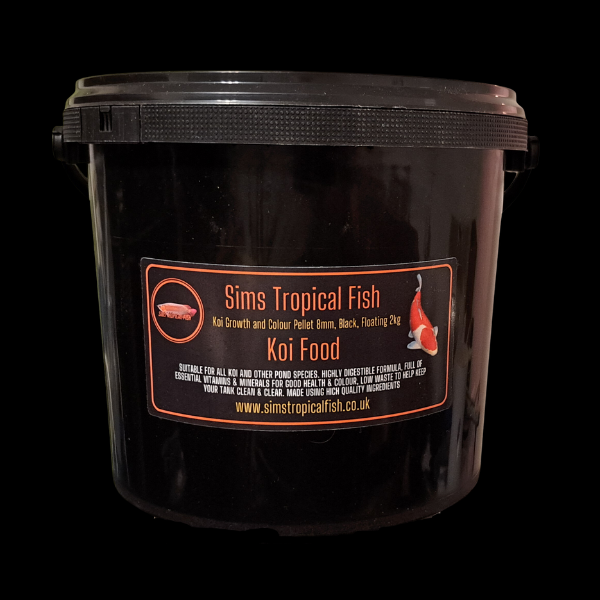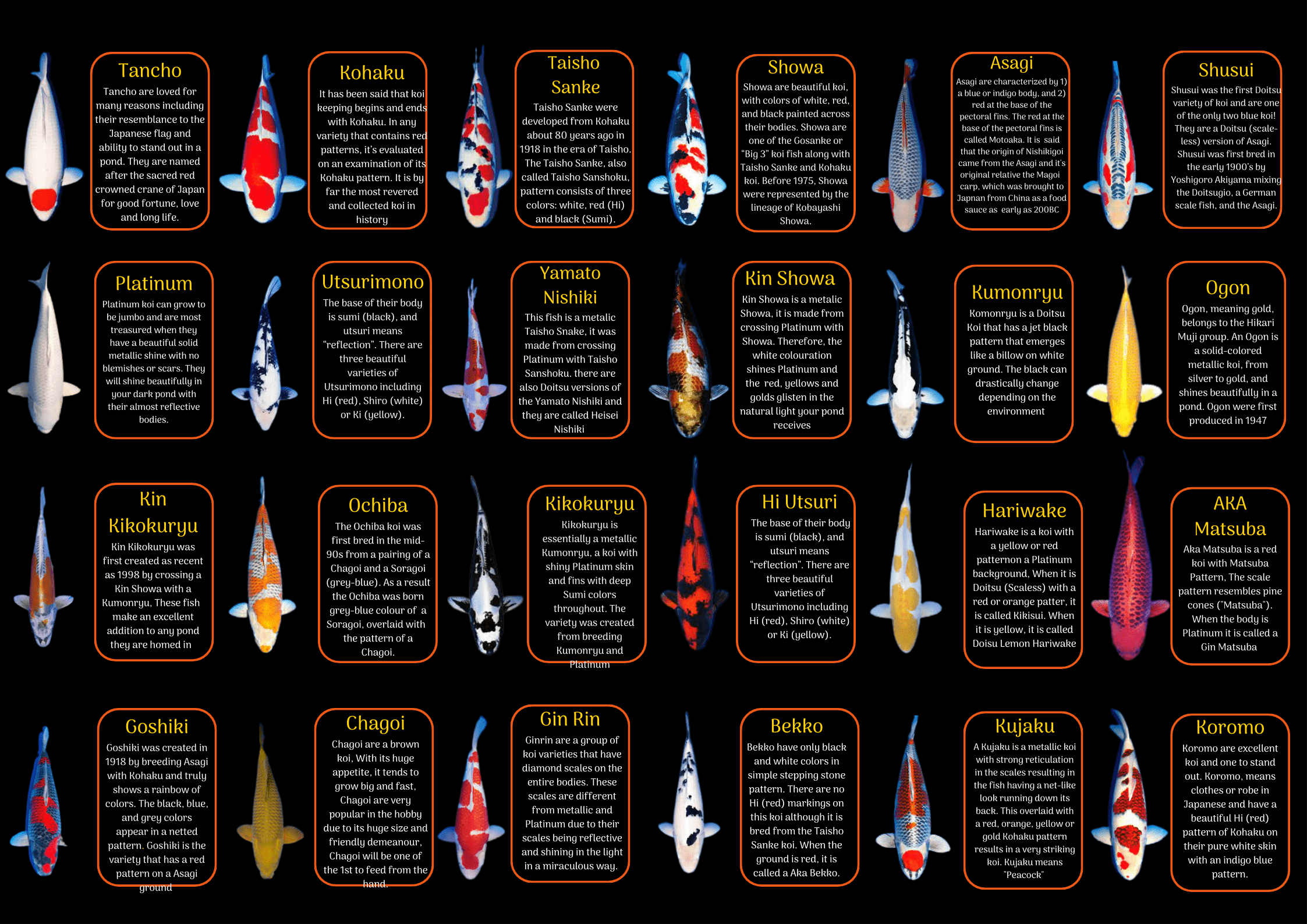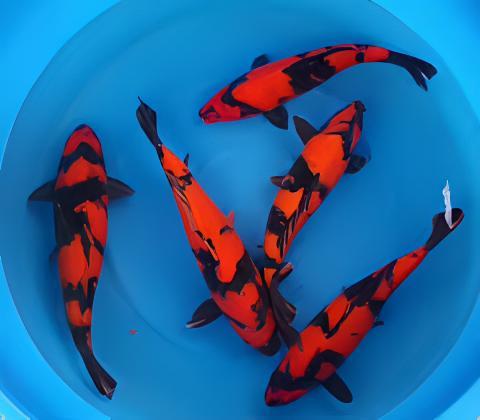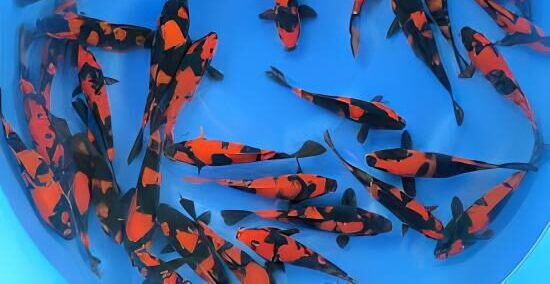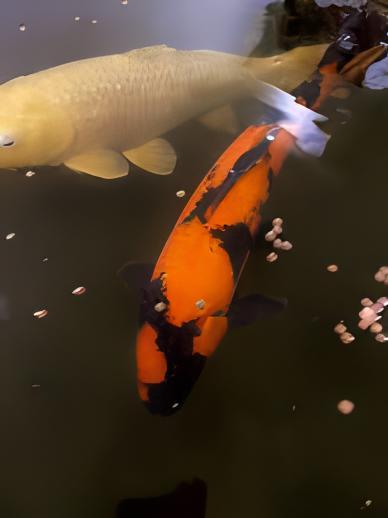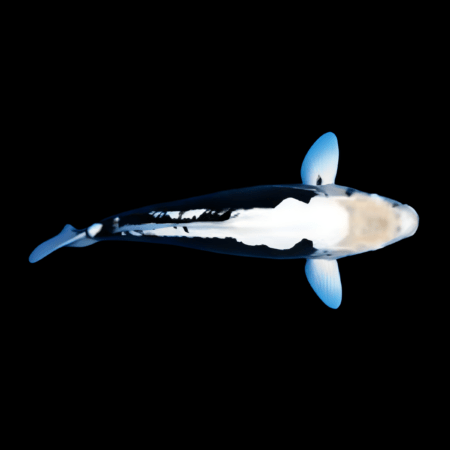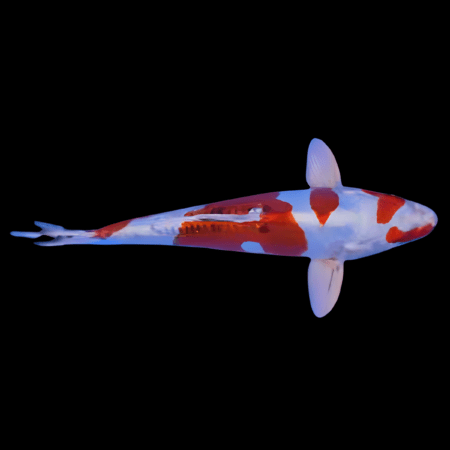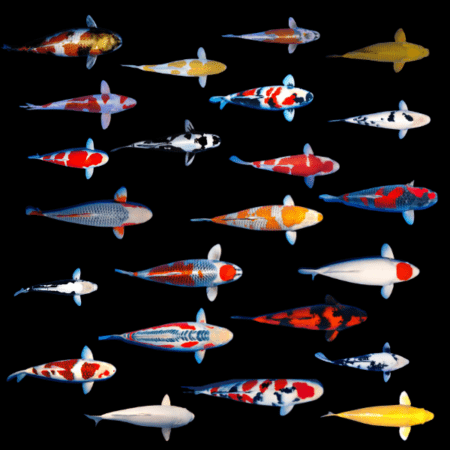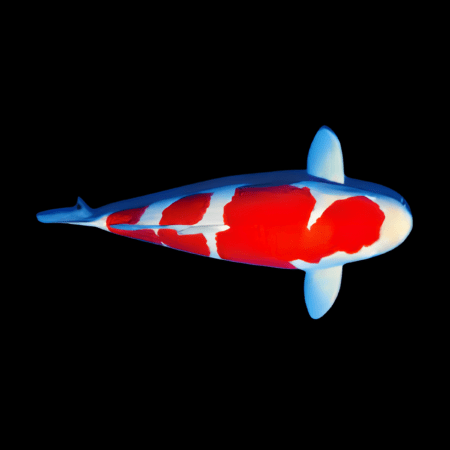Description
Hi Utsuri Grade A Koi Carp Cyprinus Carpio
Hi Utsuri (hee OOT-soo-REE) koi are a black koi with bright, vibrant red patterns over the body, head, and fins of the fish. They are another koi in the sub variety Utsurimono, often shorten to Utsuri, which covers three varieties of black koi, each with a different accent colour.
The Hi Utsuri was first bred in the late 1910s as a result of breeding a Ki Utsuri (a black koi with yellow accent patterns) and a Kohaku (a white koi with red patterns). This pairing is often used to breed Showa koi (a black fish with red and white markings) which are one of the most popular koi in the hobby and are constantly in high demand. One of the most commonly seen colour patterns in the fry of this pairing is a black fish with only red markings, that is, a Showa koi with no white pattern. These fry would usually be removed as undesirables but in this particular case, the farmer decided to keep them, grow them on and breed them in the hope of creating a new variety.
So, over the next few years, the farmer continued to breed these black and red koi and, in 1924, they were first taken to a koi show in Japan where people were very taken with this new variety. Due to their similarity with the Ki Utsuri which was another new (at the time) koi variety, these red and black fish were named Hi Utsuri, a name which emphasises the strong distinction and contrast between the hi (red) and the sumi (black).
Within only a few years, the popularity and demand for these new Hi Utsuri koi had risen spectacularly and, for a short period of time in the late 1920s, the Hi Utsuri were the most desired and valuable koi variety in Japan, even more so than the Gosanke varieties. Even almost 100 years later, while the demand has decreased a little and been replaced by many other, newer, and more exciting varieties over the years, Hi Utsuri remain a very popular koi. Unfortunately, the main way of breeding Hi Utsuri koi is still the same way as it was 100 years ago, that is as a by-product of Showa breeding, meaning that the numbers of this variety are quite low with no direct way of breeding good quality koi easily.

